Reason #3 to order a hand made tree - The overall look and shape of the tree improves the overall look of your saddle
We are no longer building saddle trees, but we have two videos about how Western saddles fit horses available on our westernsaddlefit.com website.
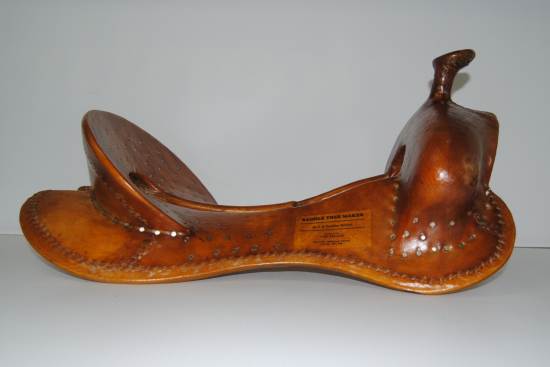
To someone who knows about saddles, there is a "look" to a saddle built on a good, hand made tree that is neater, cleaner, more refined. One of our good customers became a customer after winning a saddle competition. When he asked the judge (a very qualified and well respected saddle maker himself) what else he could do to improve his saddles further, one of the responses was "You need better trees". The look of his saddles was being held back by the foundation he was building on. Rod and I took time to brainstorm and try and pinpoint what the differences might be. Here's some of what we came up with.
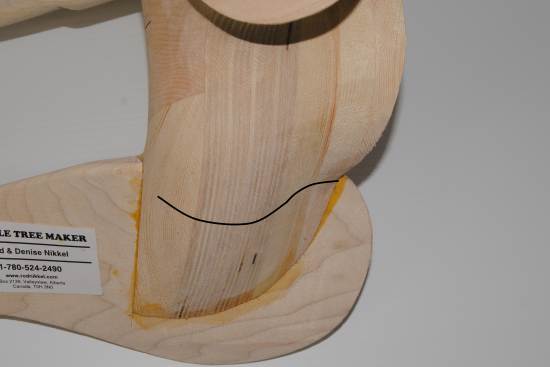
In the same way that there is a "flow" to good carving, there is a "flow" to the shaping of the fork of a tree. There should be no flat spots - everything should be smoothly curving. It is hard to catch in a picture, but the look of the curve changing from convex around the sides of the fork to concave coming up to the gullet needs to be pleasing to the eye.
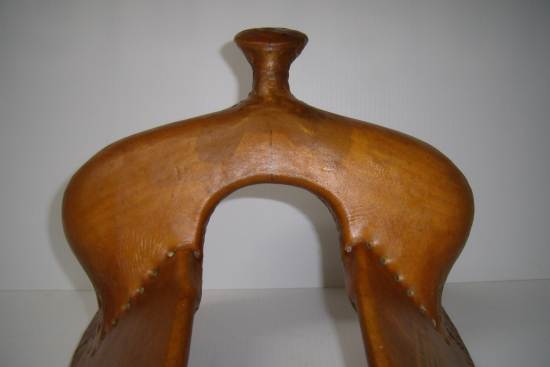
The shape of the swells is, of course, dependent on the style of fork, but you want that nice S shaped curve down around the sides, flowing into the bars, on the forks that have undercut on them.
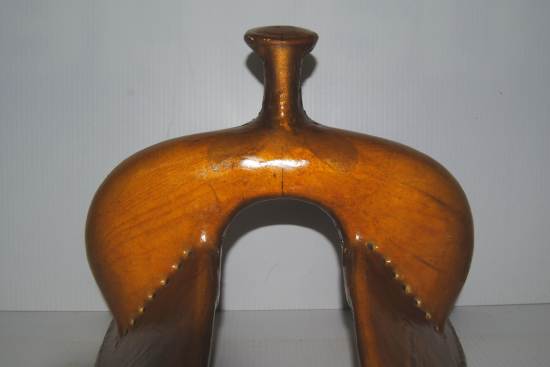
And you want nice, smooth rounding all the way down the sides on the forks that don't have undercut.
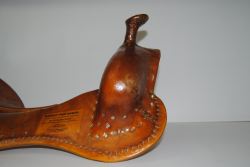 |
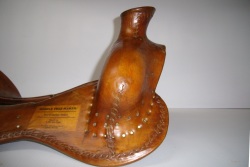 |
Because we build every tree individually, we can set the stock thickness to be whatever looks best. For example, we generally increase stock thickness on our wood post swell forks to 4 1/4" from the 3 3/4" normally used on our metal horn swell forks, just to balance the look of the larger horn. Of course, customers can always request whatever stock thickness they want.
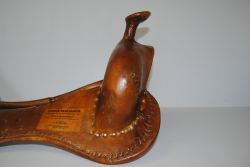 |
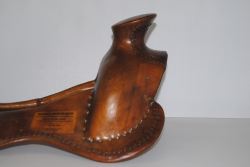 |
If the angle of the gullet lip isn't changed relative to stock thickness, it looks too downhill on a thicker stocked tree and it looks too uphill on a thinner stocked tree. We change that angle so the fork looks "right" no matter what the stock thickness is.
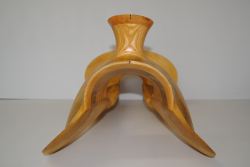 |
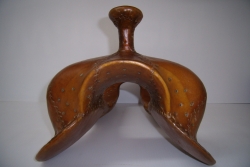 |
In the previous post on better quality materials and workmanship, we talked about how using hardwood in the fork and having multiple laminations means we have a thinner gullet in our trees have compared to production trees. Even the metal horn forks, which need a thicker gullet to accommodate the length of the screws holding the horn on, have a thinner gullet overall, and the thin gullet lip extending back a ways gives a refined look to the forks.
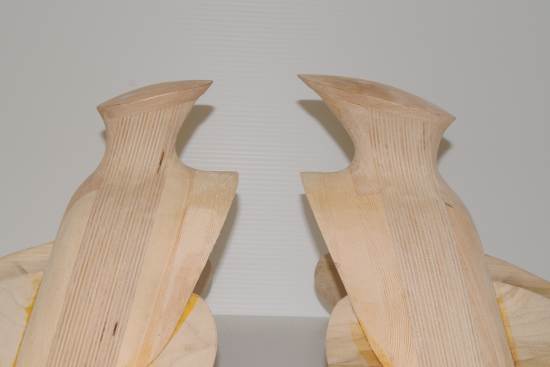
The look of the horn makes a big difference to the look of the fork. We do things like making the amount of dome on the horn proportional to the cap size so it looks balanced. (We will make flat topped horns, but only on specific request.) The shape of the neck, which is designed to put the dallies to the bottom of the horn, also looks nice. The thickness of the neck varies with the cap size to look balanced.
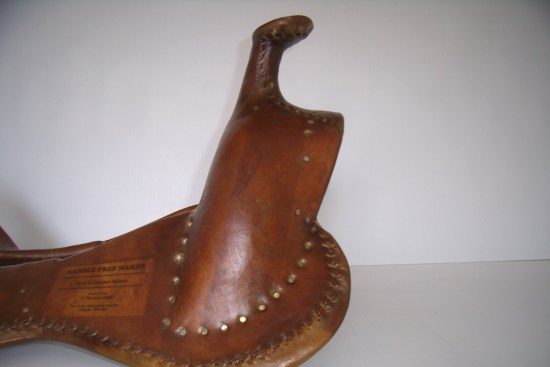
We generally position a metal horn so the angle of the neck of the horn matches the angle of the back of the fork, making a smooth line all the way from the fork to the top of the horn. Of course, we will lean horns ahead on customer request.
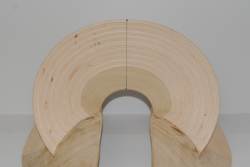 |
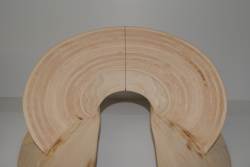 |
We have refined our patterns over the years to make our cantles look as smooth and evenly rounded all the way down to the bars as possible given the specs ordered.
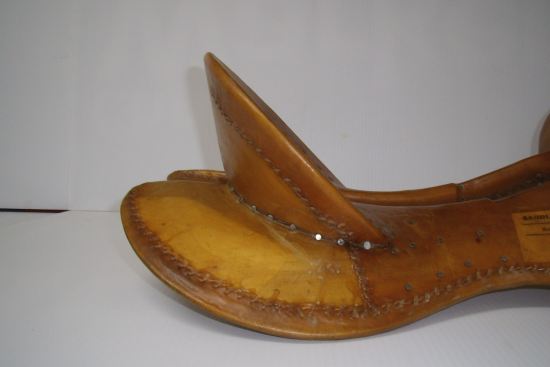
The cantle backs are flat with smooth seams so the saddle maker's carving, not the shape of the cantle, is the focus of that part of the saddle. We also like to have as much slope to the back of the cantle as possible while keeping the cantle bottom thick enough for strength. This changes based on the specs ordered.
And of course, with a hand made tree, if you can get what is in your head into Rod's head, he will do his best to shape it the way you envision it.
All these things and more affect the appearance of the finished saddle. Even if the customer doesn't know why they prefer the look of one saddle over another, it is things like this that make that difference. Of course, good saddle makers do all sorts of similar things in their construction and design to make the saddle aesthetically pleasing as well. But it is hard to produce the look of a Ferrari on the chassis of a Volkswagen Beetle.
